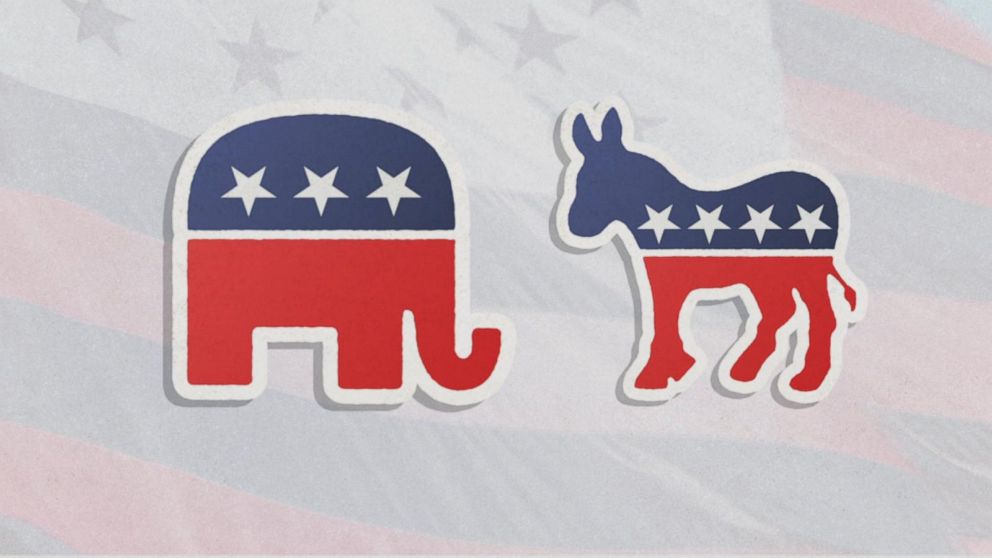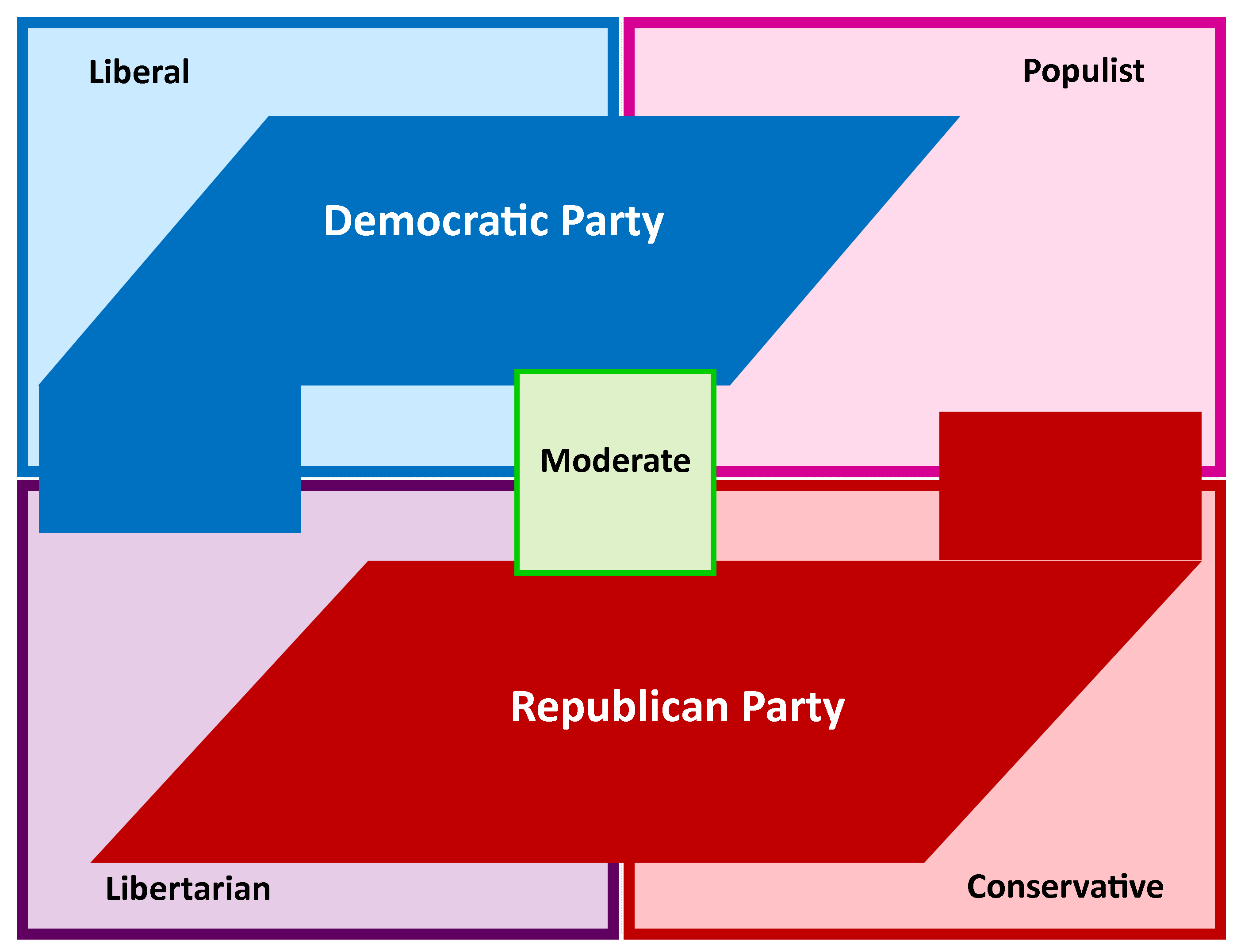Why the United States Has a Two-Party Political System
The Structural Factors behind a Two-Party Domination
There are profound structural reasons behind the United States’ two-party political domination. Most elections in the US use a plurality voting system, also known as “first-past-the-post”, where the winner is determined by who receives the highest number of votes, even if it is less than 50% of votes cast. This is combined with single-member districts where only one candidate can be elected from each geographical voting district. According to Duverger’s law, a country with this plurality voting system and single-member districts will tend to develop a two-party system over time. Since the US adopts this plurality voting method with single-member districts for all levels of government, from local to federal elections, it is not surprising that its party system conforms to Duverger’s prediction of a two-party equilibrium. Third parties find it difficult to establish a foothold in this system for structural reasons.

The Disadvantage of Third Parties in a Geographically-Based System
The use of single-member districts places third parties without a concentrated geographic base of support at a significant disadvantage. To win office, a party needs to concentrate enough supporters within a specific state or district. However, the support base of most third parties tends to be more geographically diffuse. This makes it much harder for them to muster the required number of votes to claim victory in any single geographic region.
The Historical Use of Electoral Fusion by Third Parties
To survive under these conditions, third parties in the past often employed the strategy of electoral fusion. This involved multiple minor parties collaborating by nominating the same candidate in an effort to pool their support and outnumber the major parties. Sometimes a third party would also form an alliance with a major party to gain its endorsement. Electoral fusion arrangements were more common in 19th century US presidential and lower-level elections. However, its threat to the two-party system dominance led many states to pass anti-fusion laws banning candidates from appearing on multiple party tickets.
The Impact of the Australian Ballot System
The introduction of the Australian ballot system made it even more difficult for third parties to gain traction. Prior to this, voters received ballots directly from parties. But with governments now printing ballots, the dominant two parties could impose burdensome requirements on minor parties to get listed or ban them altogether. While improving aspects like ballot secrecy, it strengthened the two-party monopoly over access to ballots.
How Strategic Voting Behavior Reinforces Duverger’s Prediction
Third party emergence is further discouraged by strategic voting behavior. Knowing they have little chance to win due to vote-splitting with similar parties, voters tactically support the major party closest to their views instead of a third option. Over time, this self-fulfilling prophecy consolidates support into the existing two-party framework as predicted by Duverger’s law.
The Suppression of Fusion Despite its Popularity in the Late 1800s
By the late 1800s, Democratic-Populist fusion tickets elected several governors and US Senators across midwestern states. Fusion was an effective strategy against the two parties. In response, many states prohibited ballot fusion through new legislation. The Supreme Court also upheld these anti-fusion bans through rulings like the 1996 Timmons v. Twin Cities decision. Fusion’s popularity showed it threatened the two-party dominance, leading to its ultimate suppression.
How Entrenched Interests Block Electoral Reform
The root cause for enduring two-party domination lies in the entrenchment of existing political interests. Significant electoral reforms needed to weaken the duopoly, like alternative voting systems, have to be approved by the very parties benefiting from the status quo. It is unrealistic to expect the dominant groups to voluntarily vote away their own power through reform. As a result, movement towards a more multiparty democratic framework remains improbable in the near future.
In Summary
In conclusion, the structural factors embedded in America’s single-member district, plurality voting framework and reinforced through historical developments, legislative changes and strategic voter behavior have combined to make a two-party system the inevitable outcome based on Duverger’s law. While fusion proved a viable third-party strategy historically, its popularity triggered a legislative crackdown. Deeper reforms face near impossible odds due to the strong vested interests upheld by the current bipartisan arrangement.
Towards Possible Reform Avenues
Despite the many barriers, some avenues for possible reform remain worth exploring. One option is improving ballot access rules to lower obstacles for minor parties. Adopting alternative voting methods like ranked-choice voting could also reduce strategic incentives. Although challenging, public advocacy emphasizing the benefits of more choices and viewpoints may build support over the long-term for restructuring the electoral system toward a healthier multi-party democracy. With persistence and creativity, positive change remains possible despite the many hurdles posed by America’s entrenched two-party duopoly.
Input: Here are a few additional thoughts and ideas that could be included in the content:
- Mention some of the third parties that emerged in the late 19th century like the Populist Party and how they threatened the two-party system
- Discuss electoral fusion more - provide some specific examples of how it worked and the states/elections where it had success in the late 1800s
- Explain more about the spoiler effect and how it discourages third party voting
- Discuss alternative voting systems like ranked choice voting and how they could help address some of the structural barriers to third parties
- Suggest that public funding of elections could help level the playing field for third parties
- Consider including a concluding paragraph about how other countries have been able to develop multi-party systems despite using plurality voting
Output: Here is an updated version of the content incorporating the additional suggestions:
Why the United States Has a Two-Party Political System
The Structural Factors behind a Two-Party Domination
There are profound structural reasons behind the United States’ two-party political domination…
The Historical Rise of Third Parties like the Populists
In the late 1800s, the agrarian-focused Populist Party emerged to challenge the status quo dominated by Republicans and Democrats. Reflecting farmer discontent with rural poverty and controlling monopolies, the Populists tapped into widespread economic frustrations. They advocated for inflationary policies like free silver coinage to help debt-ridden farmers. The Populists threatened the two-party establishment, even nominating their own presidential candidate in 1892.
The Success of Electoral Fusion in the Late 1800s
To overcome their ballot access disadvantages, third parties frequently employed electoral fusion by coordinating with each other. In the 1880s and 1890s, fusion tickets combining Democrats and Populists succeeded in electing governors in states like Colorado, Idaho, Kansas, and North Dakota. They also gained control of state legislatures, sending six Populist Senators to Congress. Fusion showed that mult-party competition was viable if alternative strategies could overcome structural barriers.
How the Spoiler Effect Discourages Third Party Support
The spoiler effect deters voters from abandoning the two major parties for third options. Knowing a similar minor party has no realistic path to victory, individuals tactically support the lesser-of-two-evils major they align with more. But this self-fulfilling prophecy perpetuates the two-party dynamic over the long-run as predicted by Duverger’s law.
Alternative Voting Methods That Could Help Minor Parties
Adopting different electoral systems like ranked-choice voting may address some flaws. By allowing voters to rank candidates by preference, it reduces the spoiler effect incentive for strategic abandonment of preferred third-party options…
Public Funding as Another Reform Avenue
Providing public funding of elections could help level an otherwise uneven playing field that favors well-financed major parties. With adequate resources, alternative viewpoints may reach more Americans and gain consideration…
Conclusion
While other mature democracies like Canada manage multi-party governance despite also using plurality voting, overcoming deep political inertia in the U.S. remains an ongoing challenge. Nevertheless, persistent advocacy focused on voters’ interests in choice and representation offers hopeful prospects for long-term reform… Let me know if any part of the update would benefit from further expansion or modification. I aimed to incorporate the key points you suggested to provide additional context around third party emergence and electoral fusion, voting incentives, and potential reforms. Please advise if any aspect needs more detail or explanation.
Input: This updated content is much improved - you did a great job incorporating all of the additional details and ideas I provided. A couple minor notes:
- In the section on the Populist Party, it may be worth noting very briefly how they formed an alliance with the Democrats in 1896 by nominating William Jennings Bryan as their joint presidential candidate.
- In the concluding paragraph where you discuss how other countries still manage multi-party systems with plurality voting, it could be useful to call out Canada specifically as an example since it was referenced earlier in the piece.
Other than that, the content is really comprehensive now. Well done integrating all the pieces into a cohesive whole while still keeping it relatively concise at the same time. Please feel free to make those last two minor tweaks and consider the piece finalized
